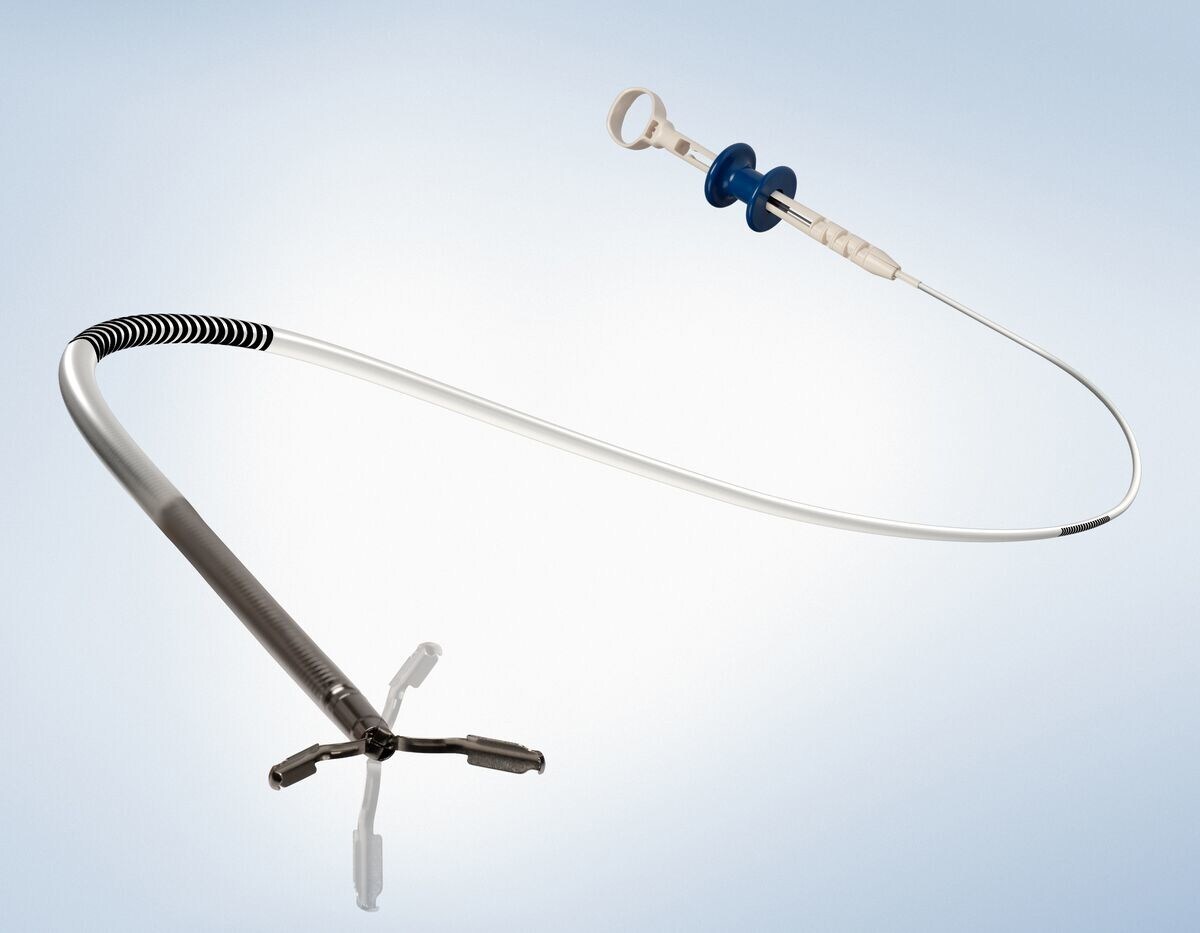
Olympus Announces Launch of Single-Use Hemostasis Clip
Olympus, a global medical technology company committed to making people’s lives healthier, safer and more fulfilling, announced today the launch of a new hemostasis clip to help meet the needs of GI endoscopists. Olympus Corporation of the Americas reports.
The Retentia™ HemoClip provides 360° rotation and an intuitive one-step deployment, offering control over placement with three different sizes to accommodate a variety of closure applications.1 It will launch in the U.S, with plans for further global expansion.
The Retentia™ HemoClip offers the following benefits:
- Arm lengths of 9mm, 12mm, and 16mm to accommodate a variety of closure applications1
- A short tail length which helps with visualization of the target site, potentially facilitating the placement of multiple clips compared to long tail lengths1
- Sheath markings that are designed to aid in insertion and extraction1
- An intuitive handle design which enables the clip to be deployed in a single step1.
Performing hemostasis within the GI tract is a technically demanding procedure and use of hemostatic clips and associated devices may result in patient injury including but not limited to inflammatory reaction, infection, bleeding and perforation.
“The Retentia™ HemoClip is another example of Olympus’ commitment to understanding the needs of clinicians and addressing them, and for this reason among others, we are excited to bring this solution to the market,” said Mike Callaghan, Global VP and General Manager for EndoTherapy, Olympus Corp. of the Americas. “As procedural needs within GI endoscopy continue to evolve, so too must our solutions. Features like ease in deployment and a broad range of size options have become imperative for procedure success, and we’re proud to deliver on these improvements for GI endoscopists.”
The Retentia™ HemoClip is part of a comprehensive Olympus EndoTherapy portfolio that provides physicians with advanced solutions for procedures such as endoscopic mucosal resection (EMR) and endoscopic submucosal dissection (ESD).
EMR and ESD2 are techniques for removing cancerous or other abnormal tissues from the digestive tract. Olympus’ endoscopic portfolio includes devices such as electrosurgical knives, and hemostatic forceps that provide targeted monopolar coagulation. The portfolio also includes technology to help detect and control gastrointestinal bleeding in combination with conventional techniques such as clips.
Hemostasis is an important concern for GI physicians, and the Retentia™ HemoClip reflects Olympus’ continued focus on solving the challenge of bleeding during endoscopic procedures. Olympus’ Red Dichromatic Imaging (RDI™) technology, a feature of the EVIS X1™ endoscopy system, helps improve the visibility of bleeding points within the mucosa and enhances the visibility of deep blood vessels compared to white light.3 RDI™ technology is not intended to replace histopathological sampling as a means of diagnosis. In addition, EndoClot® Polysaccharide Hemostatic Spray (PHS) is a powder hemostat indicated for use, in combination with other conventional techniques like clips, to control bleeds.
Visit the gastroenterology or hemostasis product pages for more information about the entire Olympus GI portfolio.
As a leading medical technology company, Olympus uses medical technology, therapeutic intervention, and precision manufacturing to help healthcare professionals deliver diagnostic, therapeutic, and minimally invasive procedures with the goal of improving clinical outcomes, reducing overall costs, and enhancing the quality of life for patients. Olympus’ Medical portfolio includes, but is not limited to, endoscopes, laparoscopes, and video imaging systems, as well as surgical energy devices, system integration solutions, medical services, and a wide range of EndoTherapy devices.
1 Data on File with Yangzhou Fartley Medical Instrument Technology Co., Ltd.
2 ESD is technically demanding, and improper use may result in patient injury, bleeding and/or perforation.
3 Data on file with Olympus (D00489968)
-
Nov 30, 2025, 06:18Amir Mohammad Nouri on The Potential of DeepPE
-
Nov 29, 2025, 17:37Almahdi Ali Explores Ipsilateral Paradoxical Thromboembolism at 22nd European Angiology Days 2025
-
Nov 29, 2025, 17:23Jack Shuang Hou Shares Major Neurology Updates This Week
-
Nov 29, 2025, 16:52Federica Fogacci on Further Strengthening Collaboration Within the Lp(a)CCELERATE Study
-
Nov 29, 2025, 16:42Dr Abdul Mannan on the Echinocyte: Mastering the Diagnostic Duality of Artifact vs. Pathology
-
Nov 29, 2025, 16:42Vikas Dua: Heme Next 1.0 A Conference with a Difference
-
Nov 29, 2025, 16:41Hind Ali: Sources Of Error in Cell Counts
-
Nov 29, 2025, 16:40Maxime Dely: Even on a Break, You Can Give
-
Nov 29, 2025, 16:39Shrinidhi Nathany: HemeNext Brings Science, Technology, and Leadership Together
